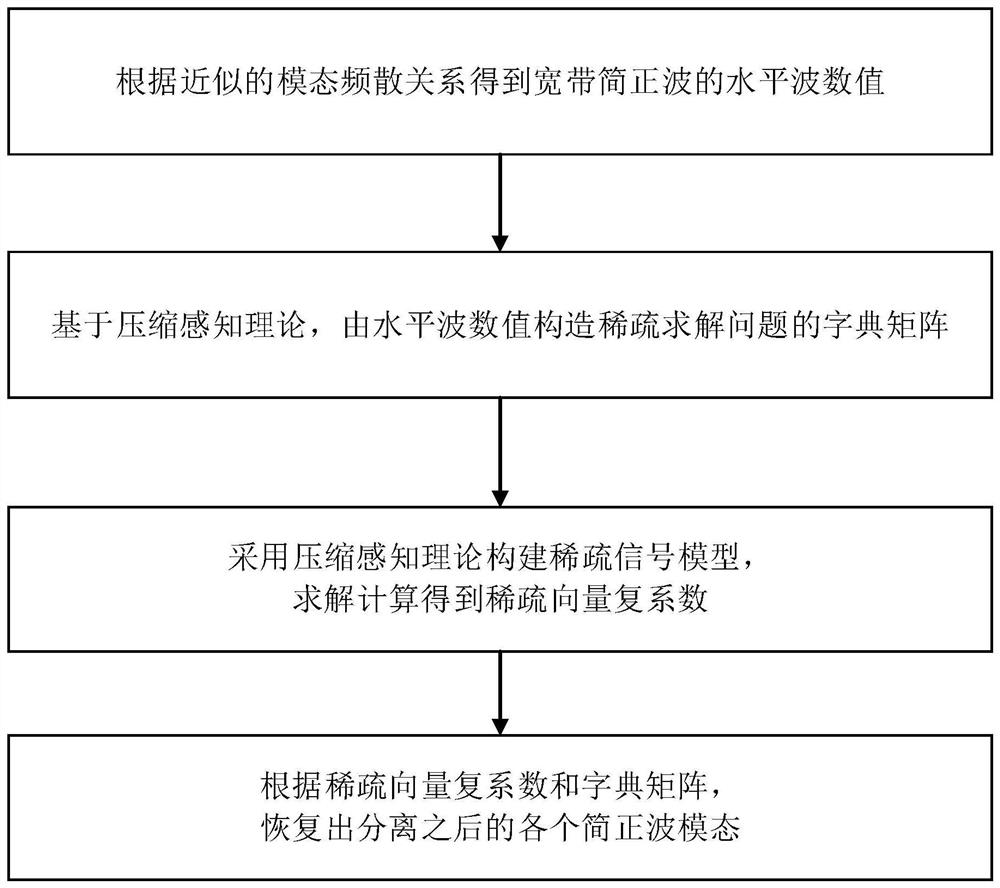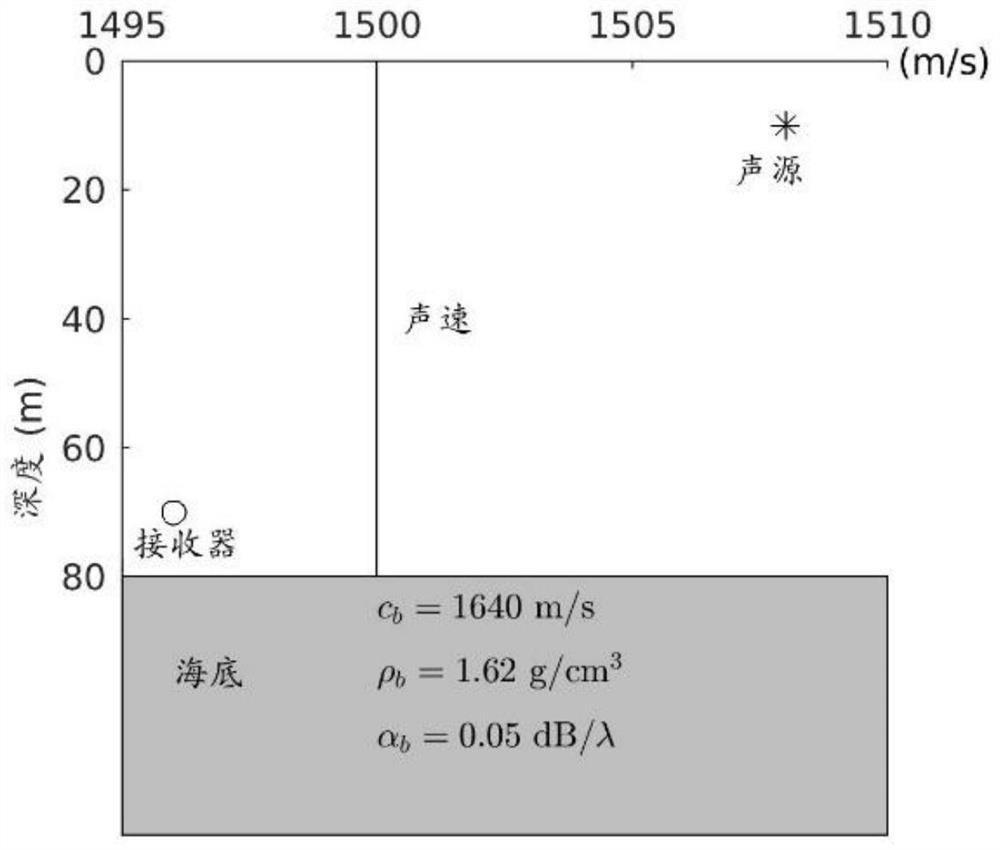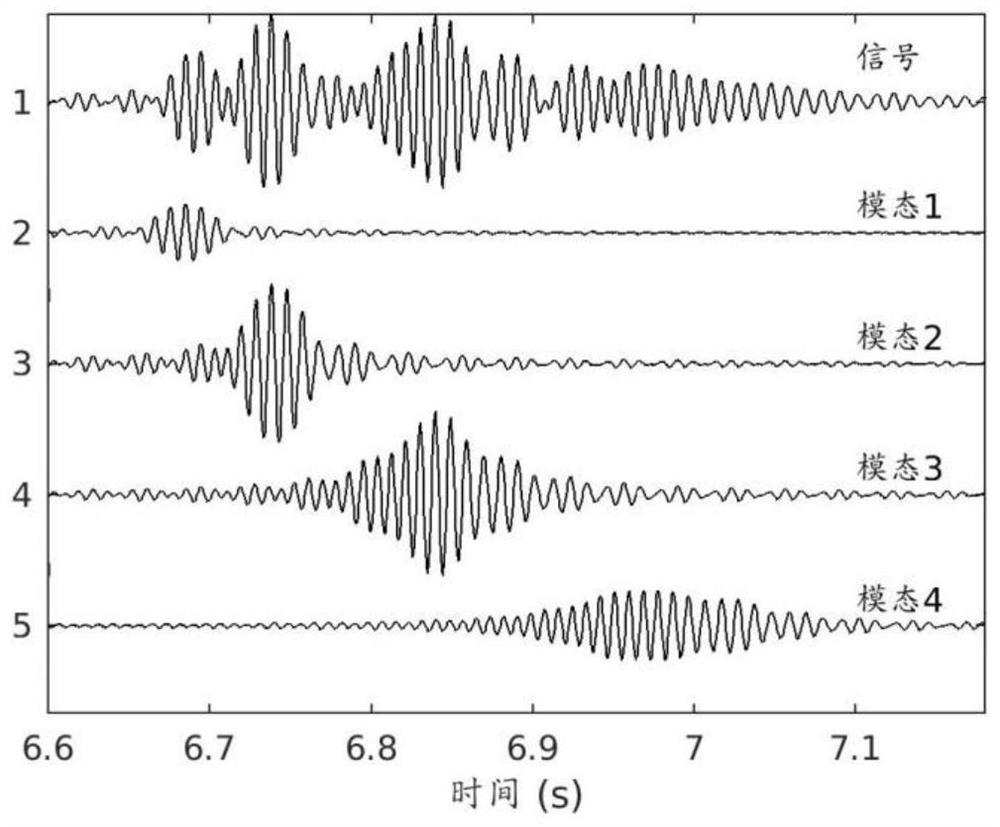Single hydrophone normal wave modal separation method and system based on compressed sensing
A technology of compressed sensing and single hydrophone, which is applied in special data processing applications, complex mathematical operations, design optimization/simulation, etc., and can solve problems such as separation performance degradation and interference
- Summary
- Abstract
- Description
- Claims
- Application Information
AI Technical Summary
Problems solved by technology
Method used
Image
Examples
Embodiment 1
[0104] like figure 1 As shown, Embodiment 1 of the present invention proposes a method for separating normal wave modes of a single hydrophone based on compressed sensing, and the specific steps are as follows:
[0105] 1. According to the shallow sea sound propagation theory, the phase velocity C of the normal wave propagating in the waveguide p Should meet C w ≤C p ≤C b , where C w Indicates the speed of sound in sea water, C b represents the speed of sound at the bottom of the sea. Therefore, for the frequency band [f 1 , f F ] on the first frequency point f 1 , we start from the interval [2πf 1 / C b ,2πf 1 / C w ] in the hypothetical value of uniform sampling of M horizontal wavenumbers. Since the speed of sound in seawater and seabed is uncertain in practical applications, C w Take the minimum speed of sound over the entire sea depth, C b Take an empirically larger value, such as 2000 or 2500m / s.
[0106] 2. Given the first frequency point f in step 1 1 Co...
example 1
[0116] Simulation example 1, reflective hydrological environment
[0117] The reflective hydrological environment refers to the reflection of normal waves of all orders on the sea surface and seabed in this kind of waveguide environment, that is, there is no refraction type of normal wave in the waveguide. This hydrological environment is simpler because all normal wave modes have the same property of being reflected at the sea surface and seafloor interface.
[0118] figure 2 The waveguide environment shown is a typical reflective hydrological environment. The seawater sound velocity is equal to 1500m / s in the entire sea depth, the sea depth is 80m, and the seabed is a semi-infinite liquid seabed model. figure 2 shown. The depth of the sound source is 10m, the depth of the receiver is 70m, and the distance between the sound source and the receiver is 10km. The simulated signal frequency band is 90-120Hz, and the frequency interval is 0.1Hz.
[0119] based on figure 2 ...
example 2
[0123] Simulation example 2, downward refraction-like hydrological environment (negative gradient hydrological environment)
[0124] The second calculation example is the downward refraction-like hydrological environment, that is, the negative gradient hydrological environment. This kind of hydrological environment often appears in summer, and the seawater sound velocity gradually decreases with depth. Figure 8(a) shows a typical summer negative gradient hydrological sound velocity profile. The speed of sound drops from 1535m / s at the sea surface to 1498m / s near the seabed. Other environmental parameters and sound source receiver settings are the same as figure 2 in the same. For this environment, the normal wave may reverse below the surface of the sea. Figure 8(b) shows the theoretically calculated phase velocity corresponding to the first six order normal waves in the 50-300Hz frequency band. The dotted line in the figure indicates that the sound velocity at the sea sur...
PUM
 Login to View More
Login to View More Abstract
Description
Claims
Application Information
 Login to View More
Login to View More - R&D
- Intellectual Property
- Life Sciences
- Materials
- Tech Scout
- Unparalleled Data Quality
- Higher Quality Content
- 60% Fewer Hallucinations
Browse by: Latest US Patents, China's latest patents, Technical Efficacy Thesaurus, Application Domain, Technology Topic, Popular Technical Reports.
© 2025 PatSnap. All rights reserved.Legal|Privacy policy|Modern Slavery Act Transparency Statement|Sitemap|About US| Contact US: help@patsnap.com



